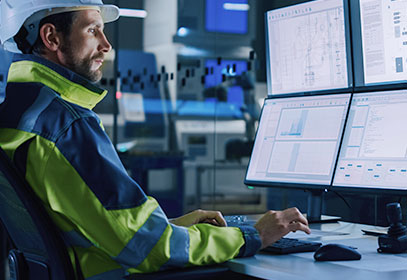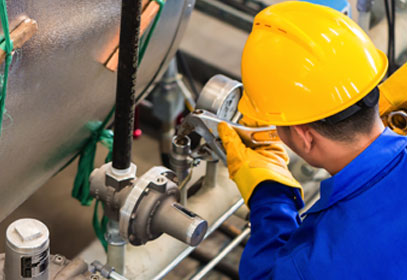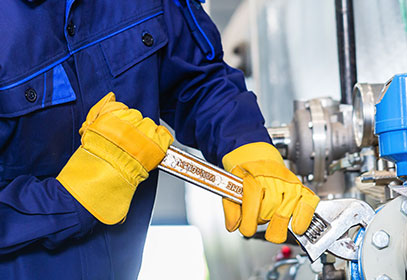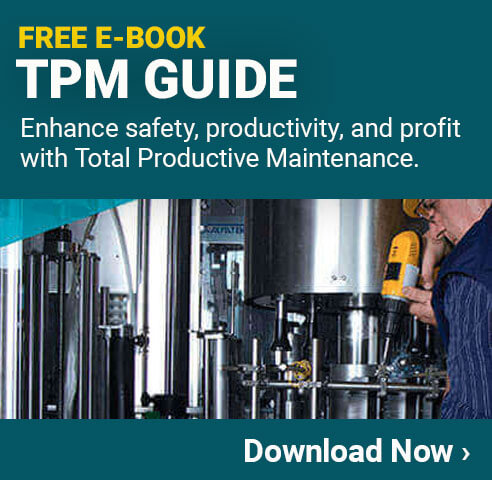Resources
Waiting to fix equipment until it breaks down or fails, reactionary maintenance, has been long been the norm for maintenance, but it comes with a steep price tag. This “run-to-failure” approach means maintenance is only happening when something has gone wrong. It leads to reduced safety, unplanned downtime, shortened asset life, and an increase in other maintenance related costs.
To combat this problem, more and more organizations have been adopting preventive and predictive maintenance programs, like Total Productive Maintenance (TPM). TPM is a proactive approach focused on keeping equipment in working condition and increasing equipment availability in order to maximize efficiency and increase product quality. The goal of a TPM program is perfect production – zero unplanned failures, zero product defects, and zero accidents.
TPM is built upon a 5S foundation with eight pillars
- Autonomous Maintenance
- Focused Improvement
- Planned Maintenance
- Quality Management
- Early/equipment management
- Education & Training
- Administrative & Office TPM
- Safety Health Environmental Conditions
“I'll fix it when it breaks” is not an option in total productive maintenance. TPM puts the responsibility of equipment maintenance into the hands of the machine operator, rather than it being a task solely for the maintenance team. Instead, operators are encouraged to help maintain their equipment, inspect it periodically, and maintenance is actually worked into the manufacturing schedule. “
Total productive maintenance is considered to be one of the most difficult and time-consuming Lean strategies to implement, but it is well worth it. At Creative Safety Supply, we are dedicated to helping organizations find their path of efficiency – search our expansive library of TPM resources below.
Getting Started
- Confused about industry jargon? Check out our Lean manufacturing glossary.
- Want to learn more about improving efficiency? Explore our continuous improvement resources.
- Have a question about total productive maintenance? Browse our TPM Q&A hub.
- Ready to get started? Shop our selection of Lean tools and supplies.
TPM Articles
Autonomous Maintenance: The Key to a Healthy TPM Program
Autonomous maintenance is an important part of Total Productive Maintenance strategies. This is done by handing over simple maintenance tasks to machine operators. …
What is a CMMS? (Computerized Maintenance Management System)
A CMMS allows for the users to easily keep track of information needed for preventative maintenance to keep equipment and workflow running as intended. …
Quality Control in Manufacturing
Quality control in manufacturing is essential to maintaining a good customer base and keeping rework costs down. …
Calculating Overall Equipment Effectiveness (OEE)
Are your lean and 5S efforts making a difference? Crunch the numbers on OEE to find out! …
Total Productive Maintenance
Learn how you can reduce downtime, improve efficiency, and enhance employee morale all in one fell swoop with Total Productive Maintenance. …
Planned Maintenance
Planned maintenance, also known as planned preventative maintenance or scheduled maintenance, is an activity where a company will schedule work done in order to avoid outages. …
TPM Questions and Answers
What is OEE?
OEE is an essential aspect to total productive maintenance (TPM), as well as Lean manufacturing. The acronym OEE stands for Overall Equipment Effectiveness, a best practice that evaluates how productive a facility is each day. It analyzes production rates and attempts to determine areas that can be improved; on large production lines, it can be… …
What is the difference between TPM and TQM?
Total productive maintenance and total quality management are two terms often used interchangeably when talking about Lean manufacturing. While the two programs do share a number of similarities, they are in fact two different approaches. Although both Lean, both terms have important distinctions. In fact, both methods should be used to achieve maximum efficiency in your… …
How can I use visual communication in TPM?
When total productive maintenance is used in a facility, operators are trained to perform preventive and routine maintenance on the machines they work with every day. Operators should be trained to look for signs a piece of equipment may be failing or improvements that could be made. An easy and cost-effective way to enforce training… …
What are the objectives of TPM?
Total productive maintenance is comprised of three things: objectives, goals, and tools/tactics. Like any other Lean manufacturing strategy, TPM aims to impact production, waste, and employee morale. However, it's objectives do set TPM apart from other tools. Goals and objectives are two terms commonly used interchangeably, but in fact have two different meanings. In terms of… …
What are the steps to implementing TPM?
Total productive maintenance is a strategy that must be carried out in a number of steps. Different organizations will have different needs for their specific TPM program, but the following are steps and actions a workplace will need to take in order to be adequately prepared for TPM implementation. Involve upper-management: This will need to happen… …
How are TPM and Lean related?
The goal of Lean manufacturing is to systematically minimize and eliminate wastes within the manufacturing process will maximizing efficiency. To achieve this, Lean offers a number of tools and strategies, like total productive maintenance, that address different areas and wastes in the workplace. Maintenance is a staple to any industrial facility and is often thought of… …
What are some tools of TPM?
Total productive maintenance aims to improve productivity in the workplace and reduce waste through its eight different pillars, a tall order! There are tools available however, that are designed to make your TPM journey a bit easier. Inspection cards: Brightly colored inspection tags are a great visual to communicate important inspection procedures for a specific… …
How does TPM relate to OEE?
Overall equipment effectiveness (OEE) is a Lean term you will often see associated with TPM and is considered a manufacturing best practice. OEE drives action within total productive maintenance and is a tool used to assess a facility's productivity by assigning it a numerical value. The Father of TPM can actually be credited with the development… …
Who developed TPM?
There is no concrete answer as to who first coined the term total productive maintenance and when it was first used; some say it is derived from American manufacturers decades ago, some credit the Toyota company Nippon Denso, and some consider Seiichi Nakajima to be the "Father of Total Productive Maintenance." While the true origins… …
What are the pillars of TPM?
Total productive maintenance consists of eight primary concepts, also referred to as the 8 Pillars of TPM. These concepts are preventive in nature and empower employees to be proactive with the day-to-day maintenance of their own workspace. The pillars and corresponding actions are as follows: 1. Autonomous Maintenance - Shifting responsibility of routine maintenance from the maintenance… …
What does TPM stand for?
Lengthy delays occur and valuable resources are wasted when a machine or piece of equipment is always on the fritz, costing an organization big time. Total productive maintenance, or TPM, is a manufacturing concept that addresses this issue through preventive and predictive measures, integrating maintenance into daily activities, and instilling a sense of responsibility for… …







